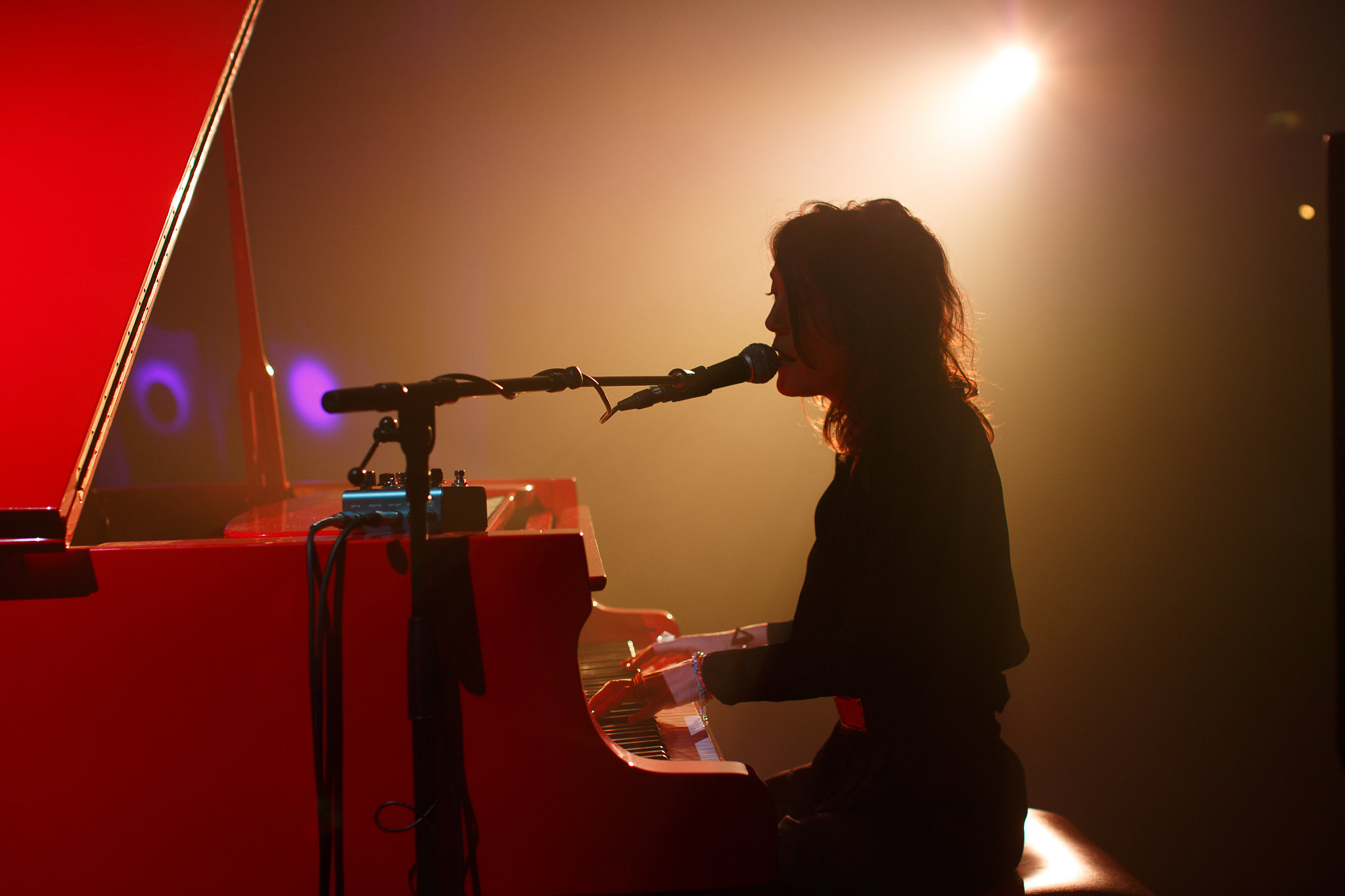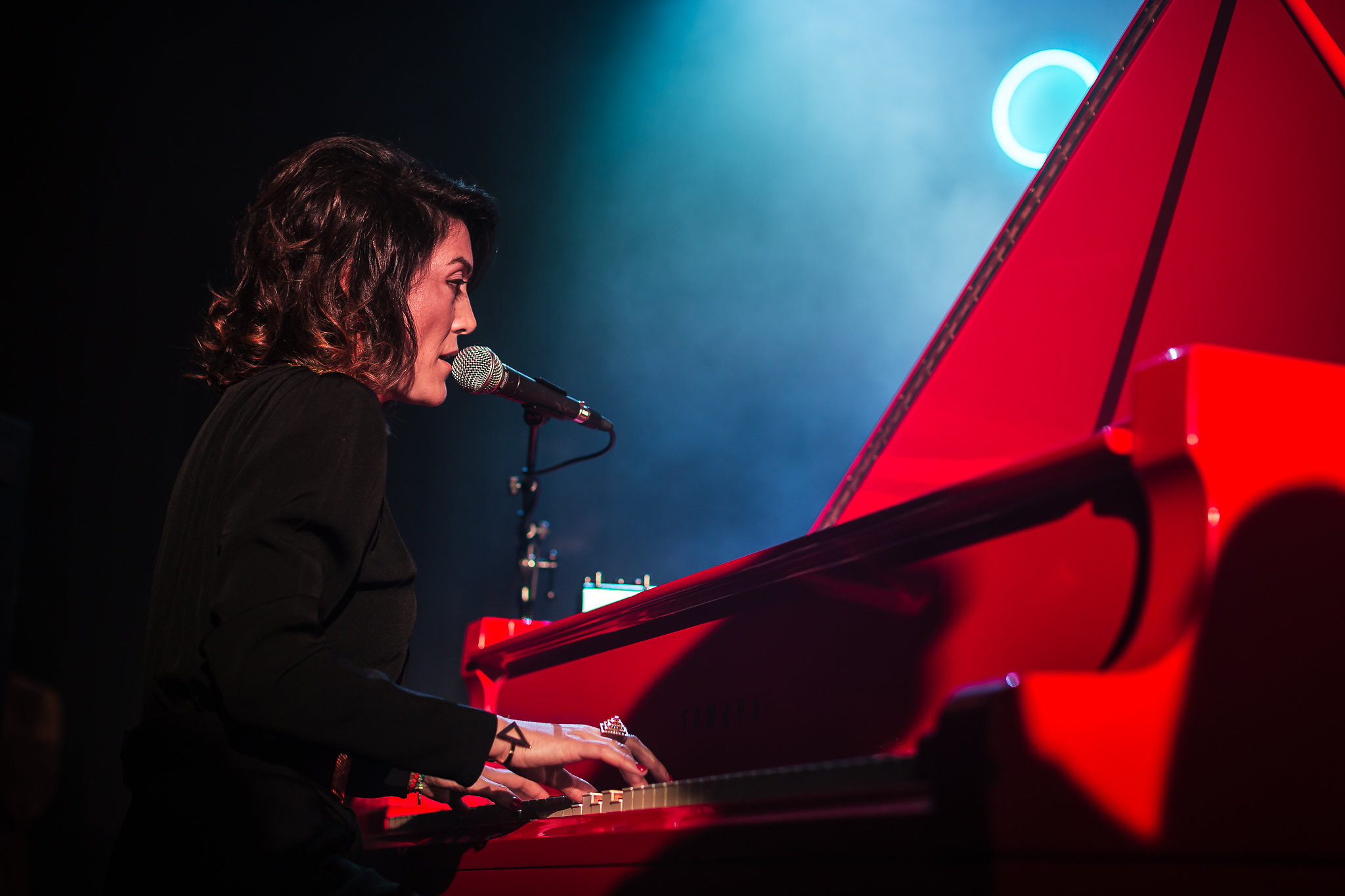Real Talk: Francesca Lombardo
The multi-disciplinary artist explores the challenges and rewards of playing live.
Born in Italy, Francesca Lombardo began DJing after moving to London in the late ‘90s, starting out on Saturday afternoons playing in Kentish Town record shop Access All Areas, a mecca for the city’s acid techno scene. These early forays into a career in music felt natural, having studied at Italy’s Conservatorium of Music from the age of 13. After her first releases on Crosstown Rebels in 2012, Lombardo has gone on play everywhere from Burning Man to IMS’ Dalt Vila.
But this was never the original plan. Now touring a live show alongside her successful DJ career, she’s returned to her roots as a singer and a piano player, highlighting these on her most recent original track, “Eye Ring,” and forthcoming single, “Rain.” Her debut album, Life of Leaf, will be out next month on her own Echolette imprint; and Lombardo has already performed material from it at London’s Royal Albert Hall. In light of this, she offered to talk about the challenges of a DJ starting a live project that steps away from the dancefloor. From the need for like-minded collaborators to the question of what even constitutes a live performance in electronic music, she explained the obstacles facing a multi-disciplinary artist in today’s age, and the rewards at the end of it.
I grew up as a musician. Before I came to London, I was always involved in bands and came to England to be a singer; that was my dream. When I started DJing it was just for fun in my bedroom, and this feeling of fun still keeps me young today—but as I can read and write music, I have always had this need to play piano and sing. You get all your muscles involved and more. With DJing, you’re using your hands and brains, for sure, but playing an instrument is a completely different art; you enter a completely different mental space. You never truly lose your skills as a DJ—if you stopped today and came back in 10 years, you’d still know how to play two records in time—with the piano and singing, you have to keep practicing or you lose it altogether.
When I started DJing, I never dreamed that it would become a job, or that I’d get to travel the world with it but that’s the way my story has gone. I’m really happy because I enjoy it so deeply but I’ve got this other mission. It’s very personal compared to DJing; it’s about playing my own music, my own melodies on the piano, my own lyrics. In doing so, you create something completely unique to you, each time you play; it feels like nothing can be recreated.
I have always wanted to blend the worlds of electronic and classical music because I spent my youth completely immersed in both. This desire has been shaped fundamentally by some unforgettable live shows. When I saw Jeff Mills doing his classical version of “The Bells,” my jaw just dropped. Orchestras have different parts for each instrument. When you make techno, it’s kind of the same. You have the bass, you have drum machines, you have pads, extra percussion. It’s a similar way of composing in this sense. What really excited me is the feeling that you can translate every single channel of a techno track into a live instrument. This is exactly what Jeff Mills did with “The Bells.” Francesco Tristano, Björk, and Agnes Obel are are also big inspirations.

The journey towards my album and live show started in 2013. I had created some initial ideas for songs, with no real purpose for them in mind, but they felt very different to what I had previously produced and played out as a DJ. Normally I was making house and techno, strictly for the dancefloor. It was through these new productions that I first met Damian Lazarus and our friendship grew. Learning about my more traditional background, Damian introduced me to the composer Andy Waterworth, who in turn encouraged me to bring more classical elements into my music. These non-dancefloor tracks came to make up the foundations of my debut LP and live show.
Later that year, I was invited to play my first Boiler Room show. Initially, I thought I was going to DJ but Crosstown suggested I incorporate string players, as I had been working with and recording them recently. To me this didn’t make any sense—DJing someone else’s music with live string players? So I decided last minute to do a live show, compiling some of these early album tracks and practicing with a quartet in London for a few days, so they could get familiar with the music. Some of the tracks didn’t have strings, but I knew these guys and they could improvise.
It was during these rehearsals that I reconnected with the essence of what a live performance is to me: collaboration, instrumentation, and improvisation. I was so deeply inspired that I set about involving more instruments and more players, stepping further away from anything overly pre-programmed, starting to play live in the way I always wanted—fully live, in the realist, purist sense. In my earlier experimentations, I had used the more industry standard Ableton, triggers, and MIDI keyboard. This was never that powerful an experience for me. I needed to sing, play piano, and work with other musicians on the fly.
The usual club promoters didn’t fully appreciate how much goes into something like this, which is why you need to build the profile of the live show first, so promoters know what to expect. You also have to reach a new audience outside of the club; it feels like finding a whole new world. You have to connect with people who consume music differently, those who don’t go out clubbing or follow the electronic music scene; I also needed to find those who didn’t really know my previous work and those who aren’t necessarily there to dance but rather to lock into each aspect of the performance, so there is a different skill in holding their attention. If you have one, your team should also be fully focussed on tapping into this new audience, be if through PR, management, or agent efforts etc.

Since these early stages, my live show has taken on many forms. From performing alongside quartets to full orchestras. These setups involved a whole other level of organisation and so much more preparation. As much as I loved doing them, it became too logistically difficult to pull off. I couldn’t afford to take string players on tour with me, so I had to find them in every city I performed. This never worked, as you can only ever manage two or three-hour rehearsals, which was far too short. So I’ve had to scale my ambitions down and wait until it’s the right time to achieve my ultimate vision. Once the album is out, it will be easier as people will have heard the vibe. The key is to wait, be patient, and keep improving. Be realistic and do what you can while aiming for what you really want.
A sense of the venues and promoters that nurture shows like mine and artists like me is also important. I feel like there should be more but often people are afraid to take risks. No doubt this could leave many DJs and producers feeling tentative about exploring live performance, perhaps getting in the way of someone realising their potential. Remaining behind the decks throws up fewer uncertainties.
Since last year I have a new set up and live show, one where I don’t have to use a laptop, I can play the piano, some synths and sing. So far, it’s a good compromise and feels legitimately live to me. I am not just recreating the sound of the record on stage, different instruments are involved, replacing the studio parts. In a way, like Jeff Mills’ orchestra in “The Bells.”

“Playing live” is concept I feel strongly about, and take great pride in. There are so many different setups that promoters and artists call “live” now. Some DJs even play other people’s tracks on Ableton, syncing them and then billing that as live. When you look at flyers, some promoters seem to think that just a laptop is enough to distinguish a live set; they’re happy to blur the lines for the sake of marketing. When I think live, I mean you’re actually playing something in the moment. Adding effects and looping isn’t live but singing or playing something then adding effects or looping this is; it comes from a unique place, again different from the known record. For me, you need to be writing something whilst you’re playing it, creating something new to that point in time. My wish is that the term “live” be used with more consideration, as I wouldn’t want this kind of performance to become devalued over time.
That’s not to say that there aren’t good examples of DJs who achieve a truly live performance, Matthew Johnson for example, he plays his own music whilst adding live synth work over the top, again making room for improvisation and new experiences. Richie Hawtin is another great example: when he plays you get a real sense that he is jamming with his instruments, they are his players. If it was just pre-programmed parts on a computer, it would become rigid and he wouldn’t be able to jam like that.
More than making a show truly live, improvisation makes a show truly enjoyable, both on the stage and in the crowd. This is the sense I get whenever I watch acts like Bonobo, Nils Frahm, and Nicolas Jaar, my ultimate live shows, although I’m sure their reputation plays some part in the production value there. I will always strive for these kind of shows in my career, as you hit another level, not in prestige but in feeling.
When you have various musicians on stage, all doing something different, contributing to one song in the moment, it can be so much more powerful than one person putting on records. Although I would never stop doing DJing myself and still love watching DJs play, it’s this transportive and all empowering emotion that I’m most chasing when I get up on stage. And, despite the hurdles involved, I hope to achieve it sometime soon.
“Rain,” the second single from Lombardo’s ‘Life of Leaf,’ LP lands Jan 14, with pre-order here.
All photos: Neil Collins
Header photo: William Worrell

